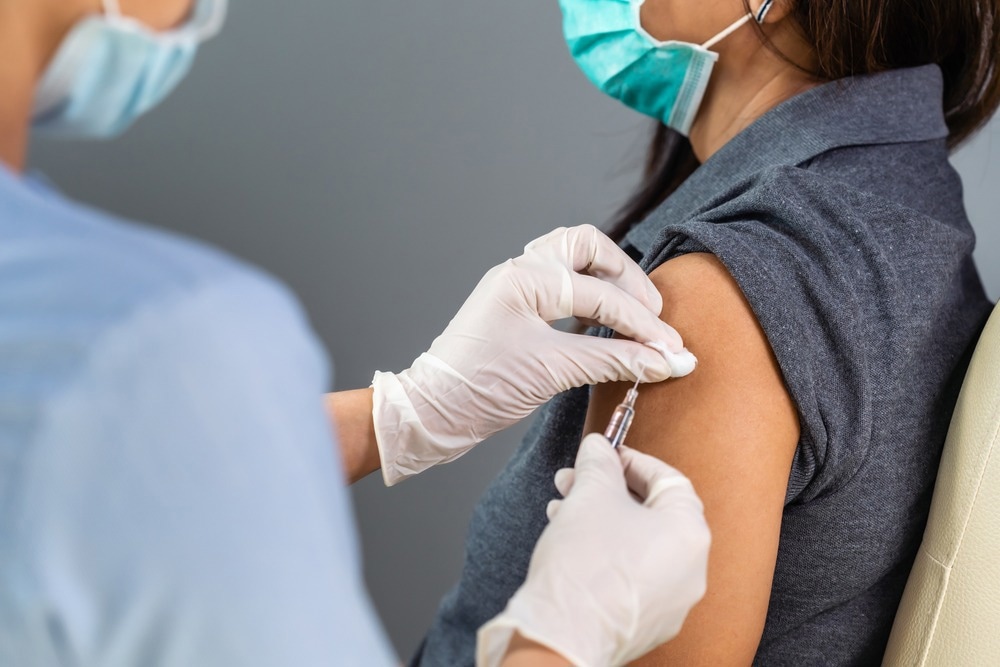Infection
COVID-19 vaccines offer protection against long-term effects, study suggests
The coronavirus disease 2019 (COVID-19) pandemic spread across the world from late 2019 onwards, causing almost seven million deaths and over a hundred times that number of infections. Post-COVID-19 conditions (PCC) or long COVID syndromes began to be reported early in the course of the pandemic. A new study in The BMJ explores how far vaccination averted PCC.
Background
Within a year of the onset of COVID-19, vaccines against the severe acute respiratory syndrome coronavirus 2 (SARS-CoV-2) were rolled out in many countries, the first dose in Sweden being given in December 2020. Vaccination is credited with a reduction in the incidence and severity of acute infection, reinfection, and breakthrough infection.
However, PCC is suspected to affect millions of COVID-19 survivors. In Sweden, it affected 2% of previously infected adults. PCC typically occurs within three months of the start of acute COVID-19, may last two months or more, and cannot be accounted for by other factors.
Symptoms of PCC include fatigue, breathlessness, brain fog, headaches and muscle pain, and chest pain. These have been classified into four clusters, namely, chronic fatigue-like syndrome, respiratory syndrome, chronic pain syndrome, and neurosensorial syndrome.
Earlier research suggested that being vaccinated against the virus might protect against PCC following break-through infections, but the evidence was of low certainty due to the presence of confounding factors.
The present Swedish study aimed to explore how well primary vaccination (two primary doses plus one booster dose) could avert PCC. The participants came from the Swedish Covid-19 Investigation for Future Insights—a Population Epidemiology Approach using Register Linkage (SCIFI-PEARL) project.
This included all COVID-19-positive adults on the register between the end of December 2020 and early February 2022, almost 590,000 people from the two largest regions of Sweden. Various events were recorded, including their first COVID-19 infection, movement out of the country, vaccination, reinfection, or a PCC diagnosis, until their death or until follow-up ended on November 30, 2022.
The researchers defined vaccinated individuals as those who had received one or more doses of the vaccine before becoming COVID-19-positive. They evaluated the odds of developing PCC with or without vaccination, compensating for sex, age, other illnesses, the general health of the individual, the circulating variant at the time of infection, and the socioeconomic profile of the participant.
What did the study show?
The results indicated that at a median of 129 days of follow-up after COVID-19 was diagnosed, PCC incidence was higher among the unvaccinated vs vaccinated group. Among those who had one or more doses of vaccine before becoming infected, a total of ~300,000 people, about 0.4%, were diagnosed with PCC during follow-up. Conversely, the incidence of PCC was 1.4% among the almost equal number of unvaccinated individuals.
About 1% of the vaccinated group experienced reinfections vs 3% of the unvaccinated group. Most (60%) unvaccinated individuals were infected during the Alpha variant dominant phase, but three-quarters of vaccinated individuals were infected with the emergence of Omicron.
Despite a very low level of hospitalization following a COVID-19 infection, the odds of hospital admission were higher among the unvaccinated at 4% vs 1.5% for the vaccinated.
Further analysis showed that among the vaccinated, about a tenth took only one dose, while just over 200,000 had two doses. About 73,000 had at least three doses. Significantly more women were vaccinated, at 57% vs 44% for men, and vaccinated individuals had a median age of 42 years vs 39 years among the unvaccinated.
The longest median follow-up of 250 days before PCC was diagnosed was observed among those who had three or more doses of vaccine vs 42 days among those with only one dose. The median time to PCC diagnosis was similar overall, at ~17-18 days, for vaccinated and unvaccinated groups.
Thus, the risk of PCC was reduced by almost 60% after one or more doses of a COVID-19 vaccine. The vaccine effectiveness against PCC was thus calculated to be 58% overall. In more detail, it increased with each dose, from 21% for one dose, ~60% for two, and 73% for three doses of the vaccine.
What are the implications?
The study indicates that COVID-19 vaccination is closely linked to a lower risk of PCC. In other words, the risk of PCC was four times higher in the unvaccinated group vs the vaccinated, though both were relatively rare at 1.4% vs 0.4%, respectively.
Earlier studies generally showed a protective effect of vaccination but with limited reliability due to the large differences between studies and low certainty of evidence. The current study excluded all unvaccinated people who subsequently received one or more vaccine doses during the period of follow-up from the original unvaccinated group to ensure rigorous methodology was preserved.
The protective effect might be explained by a lower viral load during acute infection, resulting in reduced viral persistence and, therefore less acute and long-term activation of abnormal immune responses. Earlier, these authors demonstrated a 37% risk of PCC among COVID-19 cases who required intensive care unit (ICU) admission. Such severe infections are reduced following vaccination, which is one pathway leading to a lower PCC risk.
However, other mechanisms also appear to be at work to foster vaccine-induced protection against PCC, which may occur even in those without a confirmed COVID-19 infection.
“The results from this study highlight the importance of complete primary vaccination coverage against COVID-19, not only to reduce the risk of severe acute covid-19 infection but also the burden of PCC in the population.”

